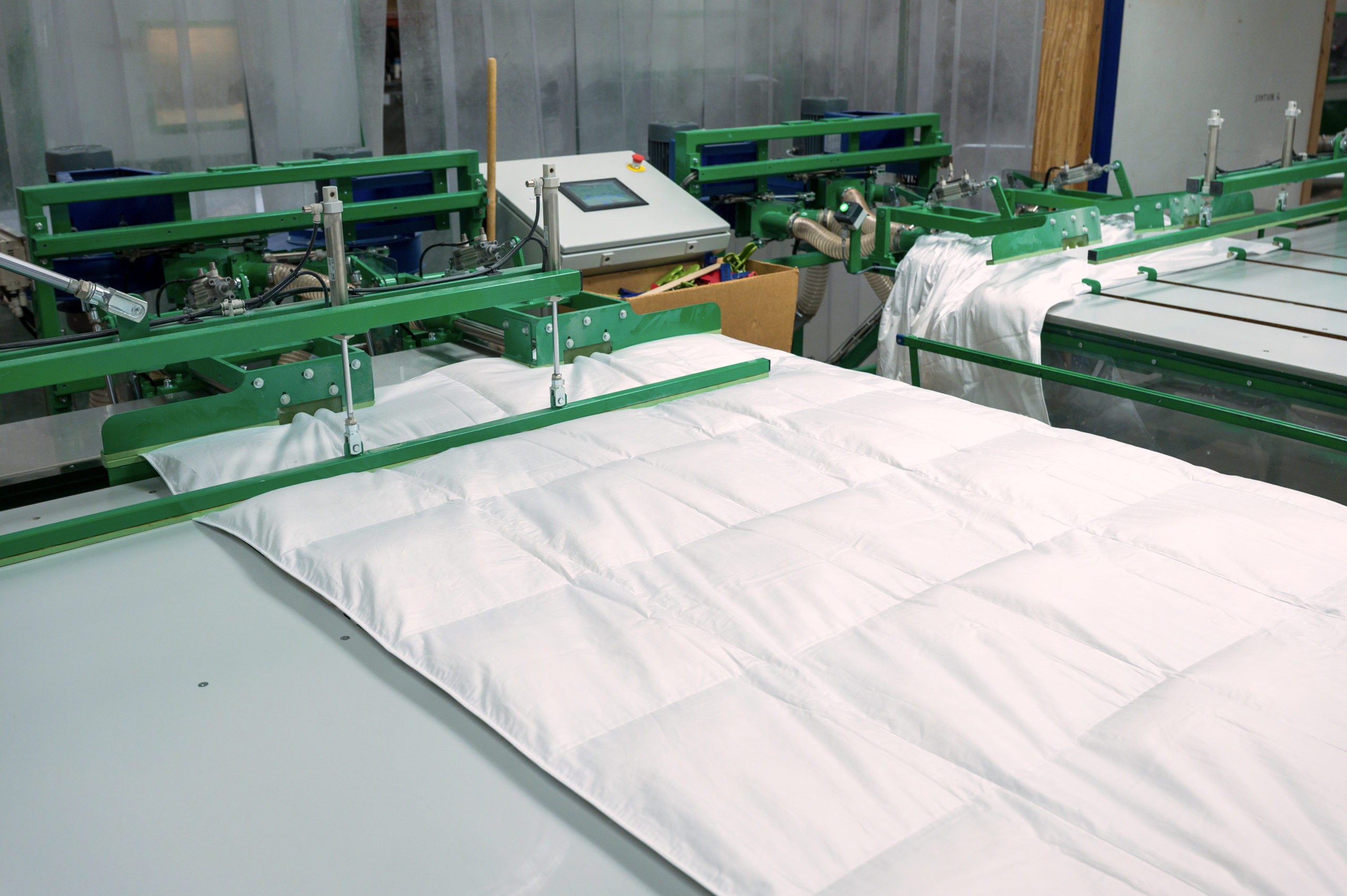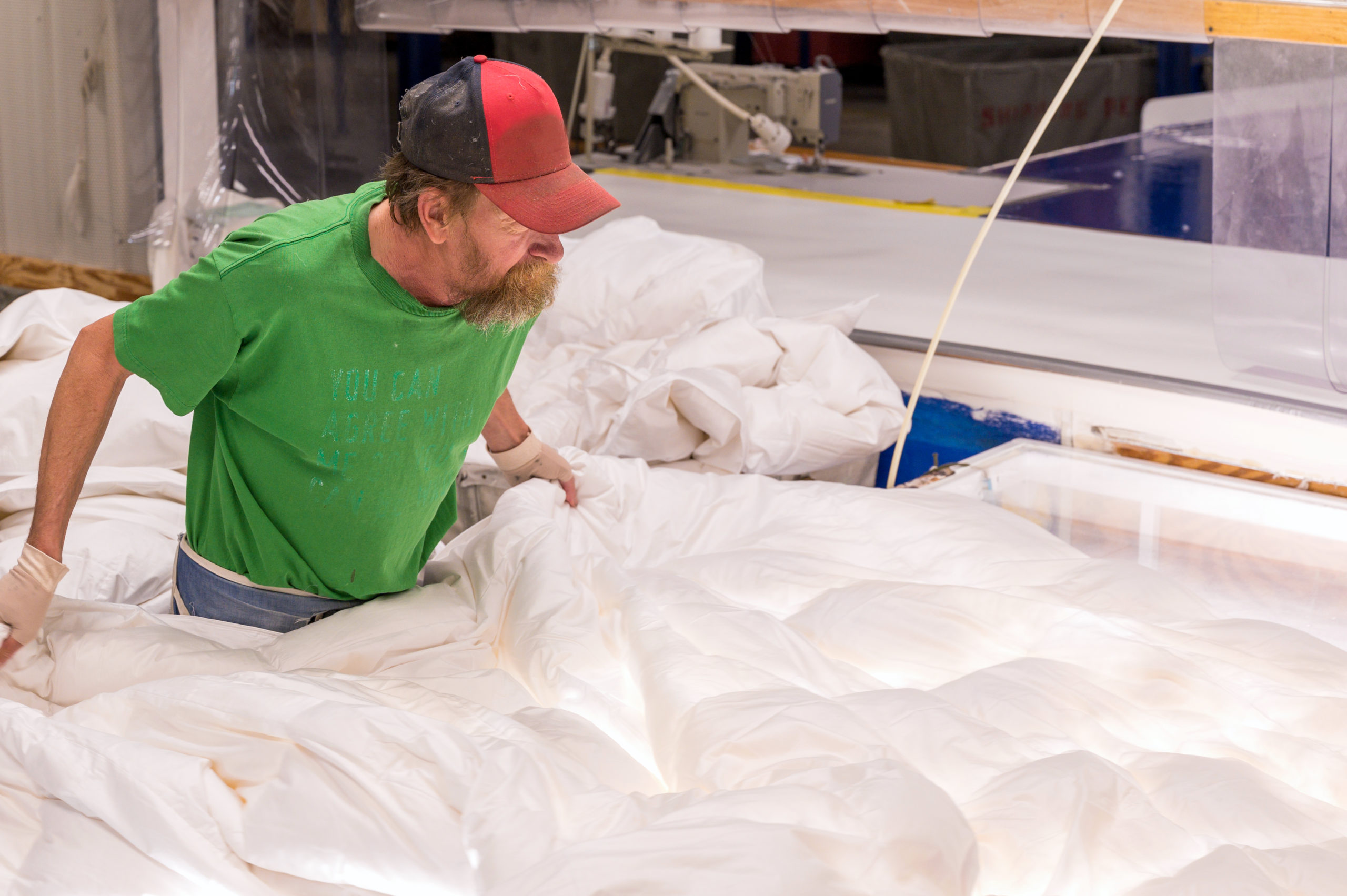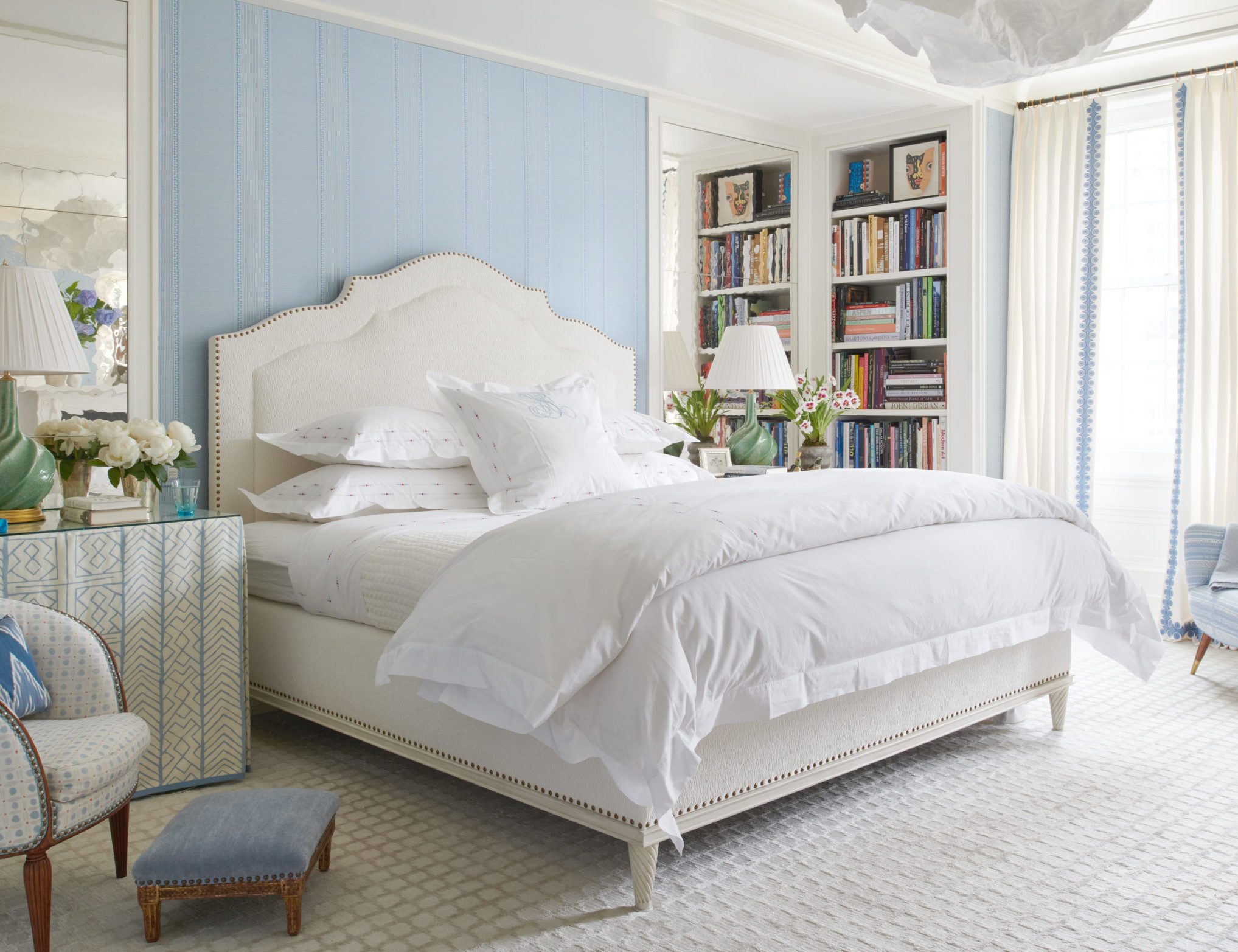Fill-power, weight, clusters, loft—if you’re flummoxed by the dizzying blizzard of choices and terminology when it comes to investing in top-tier bedding, don’t fret. The key to finding a comforter or pillow that will last well into the future is knowing what you’re looking for. And there’s no one better to give us the, ahem, lowdown on all things down than Susan Wojewoda, the president of Scandia Home, which has been crafting luxury bedding for more than 50 years. We spoke to Wojewoda to learn more about how to navigate this feather-filled world.

Know where your down comes from.
Feathers and weather are inextricably intertwined: the colder the climate, per Wojewoda, the better the down. When birds live in chillier regions, their clusters of feathers grow larger to keep them warmer—and larger clusters of down are more desirable for a cozy fill. Poland, Hungary and Germany are key sources of prime down, as are the colder regions of China. European goose down tends to be better, though: Poultry farmed there will likely be allowed to grow larger, as goose is still eaten in Europe as a luxury foodstuff, whereas Chinese birds are earmarked mostly for feather production and cycled through more quickly as a result. (It’s their larger size that mean goose down bests duck, too.)
One other must-see marker of quality: Look for down marked as RDS, or produced under the Responsible Down Standard. It’s a voluntary code that ensures ethical, humane rearing, and outlaws practices like live plucking.
Learn the difference between fill power and loft.
Duvet connoisseurs toss around two phrases with abandon: fill power and loft. Understanding each is key to choosing the right weight, and style of comforter for you.
Fill power is quantifiable. Think of it like a movie rating for your duvet, a marker of the size of a given feather cluster. Skip anything below 600 and aim for 800 for the ultimate luxury. The higher the number, the larger the clusters; the larger the cluster, the more warmth it will provide, and the fewer number of clusters will be needed to fill a space. As fill power rating rises, then, a comforter becomes both lighter and warmer.

Behind the scenes of the Scandia production factory in Wisconsin.
Courtesy of Scandia HomeAllergy sufferers can use down, too.
Don’t discount down even if you need hypoallergenic comforters—as long as it’s processed thoroughly. “It’s quite common for someone to say they’re allergic to down, when in reality that person is allergic to the dust particles within the down,” explains Wojewoda, noting that all down used by her own firm first undergoes a 12-step cleaning and washing program to eliminate almost all of those allergens. Check to verify similar processing when buying other brands’ products, too.
Anyone with an ethical, rather than medical, concern around down can opt for vegan alternatives, of course, which are made from polyester, wood or corn byproducts. Contemporary versions are engineered to ape the tendril-like surface of natural feathers, though they lack down’s core; they will feel similarly spongey, but the lack of core reduces their durability and insulating properties.
Don’t forget the shell.
It’s a rookie mistake to focus solely on the filling, though. The shell is a vital component, too. Try to avoid cheaper, looser weaves if you’re investing in a duvet you want to keep for decades. High thread-count, natural textiles (think sateen, damask, or cotton percale) are what Wojewoda consider “down-proof fabrics,” since the close weave prevents feathers from leaking out; the finished duvets are much more durable as a result. The hand is better, too, and much lighter to the touch and gentler on the skin.

Inspecting the finished product.
Courtesy of Scandia HomeKeep your down as fresh as on day one.
Maintenance is vital after investing in top-flight down bedding. For pillows, always add a protector to provide an extra layer between the delicate filling and sweat or body oil; as for a comforter, it’s best to regularly air it outdoors for maximum lifespan. “Putting it on a clothesline is a wonderful thing to do, especially in the spring or fall, because the air is still crisp, but the comforter won’t get frozen,” says Wojewoda. “It will get a freshening up that makes it smell crisp and clean.” As for washing, she recommends once yearly; wash it in the gentle cycle of your machine with a detergent formulated specifically for down, or take it to the dry cleaner.
…or outsource maintenance to a pro.
Wojewoda notes that many folks are nervous to dip that feather-filled investment in water—which is one reason Scandia offers a cleaning service via an endorsed, third-party partner. Its lifetime warranty for the product means it will refurbish or replace any item that’s lost its loft, or heft: Experts at the La Crosse, Wisconsin-based company’s headquarters will assess its condition, refilling pillows or replacing comforters as necessary. Always look for firms that offer such aftercare whenever investing in a high-quality duvet: It’s more sustainable, and a guarantee of the quality they offer.















